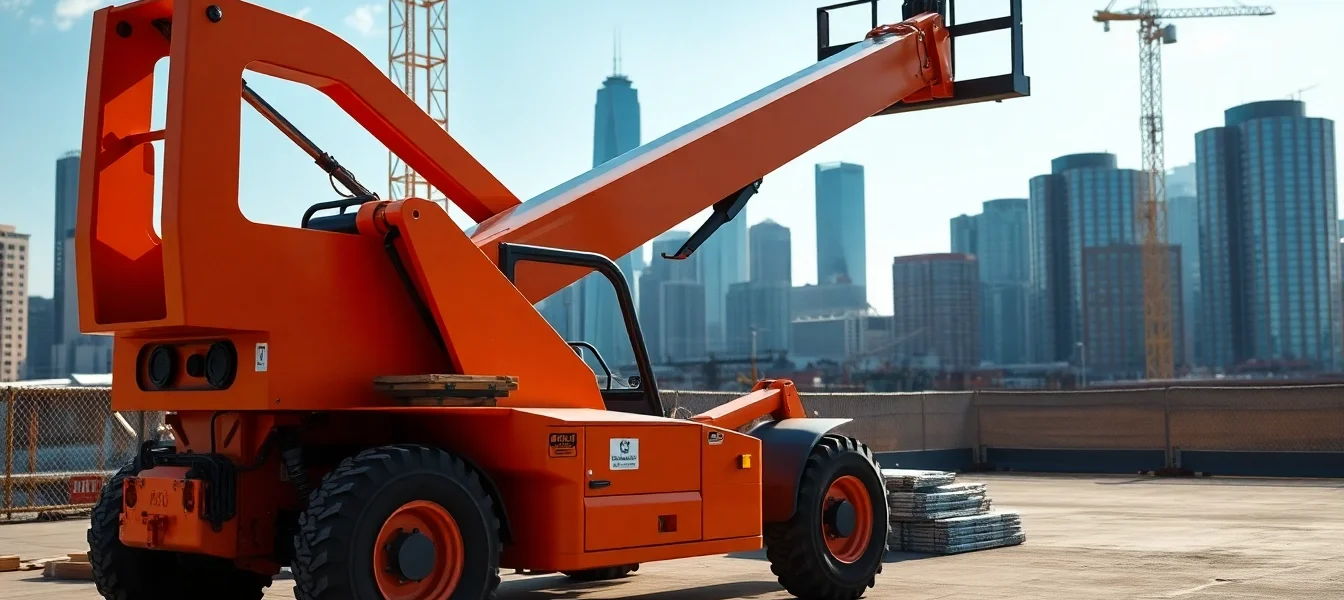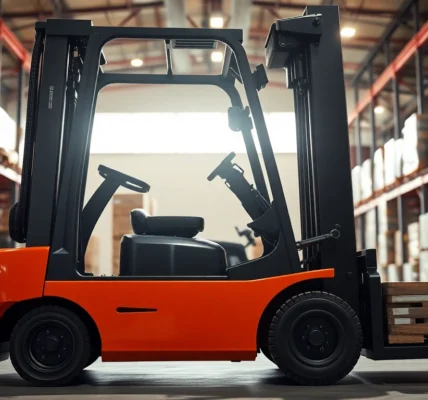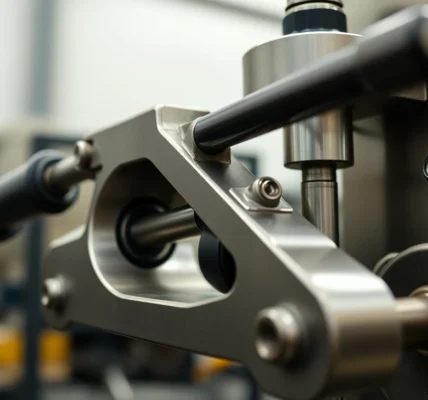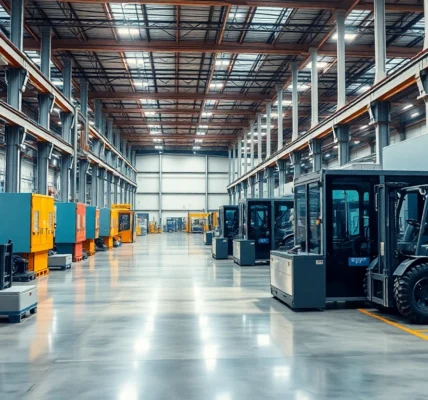Premium Telehandler Rental Solutions for Construction and Industry Projects
Understanding Telehandler Rental: Key Benefits and Uses
In the dynamic world of construction, agriculture, and industrial projects, efficient material handling is paramount to ensuring project timelines, safety, and cost-effectiveness. One of the most versatile and valuable pieces of equipment that has gained widespread adoption is the telehandler, also known as a telescopic handler. For businesses and contractors looking to maximize operational flexibility without the hefty investment of outright purchase, telehandler rental offers a practical solution that combines performance, convenience, and economic benefits.
What is a Telehandler and How Does Rental Work?
Defining the Telehandler
A telehandler is a specialised piece of lifting equipment equipped with a telescopic boom that extends forward and upward, enabling it to lift loads to considerable heights and distances. Unlike conventional forklifts, telehandlers often come with a variety of attachments such as forks, buckets, and lifting hooks, making them adaptable to multiple tasks. Their robust design allows them to work across rough terrains, making them indispensable in construction sites, farms, warehouses, and industrial facilities.
How Telehandler Rental Works
Renting a telehandler involves engaging with specialised equipment providers who own a fleet of machines available for temporary use. The rental process typically begins with a consultation to determine your project requirements, including lift height, load capacity, and terrain conditions. Rental companies provide a range of models and specifications suited to different tasks, offering flexible rental durations from daily, weekly, to long-term arrangements. The process includes delivery of the equipment to the site, operational support, and guidance on safety protocols. For many users, telehandler rental streamlines operations, reduces upfront capital expenditure, and provides access to the latest machinery with maintenance and support services included.
Advantages of Renting a Telehandler for Your Project
Cost Efficiency and Flexibility
One of the primary advantages of renting a telehandler is significant cost savings. Purchase costs for high-quality telehandlers can run into hundreds of thousands of pounds, and additional expenses such as storage, maintenance, and depreciation further increase total ownership costs. Rental agreements eliminate these expenses, allowing businesses to allocate resources more effectively. Moreover, rental offers flexibility in equipment choice, enabling users to select models tailored to each project’s specific needs and size, avoiding the risk of under- or over-investment.
Access to the Latest Technology and Equipment
Equipment technology advances rapidly, with modern telehandlers featuring improved fuel efficiency, environmental compliance, and safety features. Rental companies often update their fleets regularly, providing access to cutting-edge machinery that improves productivity and safety standards. This ensures that your project benefits from technological innovations without the need for significant capital expenditure.
Reduced Maintenance and Downtime Risks
Managed rental agreements include maintenance and servicing as part of the package. This reduces downtime caused by mechanical failures or the need for repairs, ensuring continuous workflow. Rental providers also handle routine servicing and inspections, freeing your team from logistical burdens and compliance worries.
Enhanced Safety and Operator Support
Rental companies often provide operators or training for your staff, ensuring safe and efficient equipment use. This professional support minimizes accidents and maintains compliance with health and safety regulations, especially critical on complex or high-risk projects.
Common Applications in Construction, Agriculture, and Industry
Construction Sector
Telehandlers are indispensable on construction sites for lifting and placing materials such as bricks, steel beams, and scaffolding components. Their agility in confined spaces and ability to reach high levels significantly enhance productivity and safety, especially in high-rise or complex structures.
Agricultural Use
In agriculture, telehandlers facilitate loading and unloading materials like feed, fertilisers, and machinery. Their versatility allows them to operate across uneven terrain, making them suitable for barn, yard, or field tasks.
Industrial and Warehousing Applications
Industry and logistics facilities utilize telehandlers for stacking pallets, managing inventory, and moving heavy loads within large warehouses or outdoor yards. Their ability to operate with various attachments makes them adaptable for multiple logistical needs.
Choosing the Right Telehandler for Your Needs
Different Models and Specifications Available
The market offers a wide spectrum of telehandler models, ranging from compact mini telehandlers with 4-meter lifting heights ideal for tight spaces to large machines with upwards of 30 meters reach for high-volume lifting. The choice depends on specific operational needs, terrain, and load requirements. Leading brands include Wacker Neuson, JCB, Manitou, and Terex, each offering models with unique features such as four-wheel drive, all-terrain capabilities, and load capacities from 1,000 to 3,000 kg.
Factors to Consider: Lift Height, Load Capacity, Power Options
Selecting the appropriate telehandler requires a detailed evaluation of project parameters:
- Lift Height: Ensure the model can reach the highest point in your project scope.
- Load Capacity: Consider maximum load weights, including safety margins for your typical materials.
- Power Source: Diesel, LPG, or electric-powered models; electric models are more suitable for indoor or environmentally sensitive areas.
- Terrain Compatibility: All-terrain versus rough-terrain models based on your site’s surface conditions.
Comparing Rental Options: Rates, Duration, and Features
Rental costs vary depending on model specifications, rental duration, and additional services such as operator training or delivery. Weekly rates can start from as low as £350 for basic models, while advanced telescopic handlers may cost upwards of £1,000 per week. Long-term rentals often include discounts, and some providers offer flexible terms to match project timelines. Always compare what’s included—such as maintenance, insurance, and support—to ensure you receive the best value.
Step-by-Step Guide to Renting a Telehandler
Assessing Your Project Requirements
Begin by thoroughly analysing your project scope:
- Determine required lift heights and load weights.
- Identify terrain and space constraints.
- Estimate rental duration based on project timelines.
- List potential attachments and operational features needed.
This comprehensive assessment ensures your rental selection is precisely tailored to your needs, optimizing efficiency and cost.
Finding Reliable Rental Providers in the UK
Reliable rental providers are critical to ensuring equipment availability, safety, and support. Seek suppliers with an established reputation, transparent pricing, and comprehensive service packages. Resources such as local networking, industry associations, and online reviews can help identify trusted partners. For instance, well-established companies like Rentmas specialise in offering a wide range of telehandlers with flexible rental plans, expert guidance, and timely delivery.
Booking, Delivery, and Operating the Equipment Safely
Once you’ve selected a provider, confirm your rental details, including model specifications, rental period, and delivery schedule. Ensure the equipment is inspected upon arrival for safety and operational readiness. Proper operator training, familiarisation with controls, and adherence to safety protocols are essential. Always use certified operators if hiring with operators, and maintain a safety-first approach throughout the project to prevent accidents and ensure smooth operations.
Maximizing ROI from Your Telehandler Rental
Maintenance and Safety Best Practices
To maximize the benefits of your rental, implement rigorous maintenance routines aligned with manufacturer guidelines. Daily inspections for leaks, tire condition, and operational issues prevent breakdowns. Use safety measures such as load charts, stability checks, and proper attachments to minimise risks. Compliance with health and safety legislation also fosters a safer working environment.
Training and Operator Considerations
Skilled operators significantly impact productivity and safety. Invest in proper training covering controls, load management, and site-specific hazards. Many rental companies offer operator training services or certification programs, ensuring your team is competent and confident in using the equipment effectively.
Tracking Performance and Cost-Effectiveness
Regularly review operational metrics such as cycle times, downtime, and fuel consumption. Use this data to refine operational procedures, optimise usage, and justify rental expenses. Effective management ensures your project gains maximum value from the equipment while maintaining safety and efficiency.
Market Trends and Future Developments in Telehandler Rentals
Emerging Technologies and Equipment Innovations
The telehandler industry is witnessing exciting technological shifts, including the integration of IoT sensors for real-time condition monitoring, telematics for route optimisation, and electric drive systems reducing emissions. Such innovations enhance safety, operational efficiency, and environmental compliance, shaping future rental options.
Environmental Sustainability and Equipment Efficiency
Sustainability is increasingly a priority, with rental companies investing in eco-friendly models featuring lower emissions and energy-efficient systems. Electric telehandlers are gaining popularity for indoor and sensitive environments, aligning with corporate carbon reduction targets.
Insights into Pricing and Rental Market Growth
The UK telehandler rental market continues to expand, driven by infrastructure development, urbanisation, and a demand for flexible equipment solutions. Competitive pricing, coupled with technological upgrades, ensures an increasingly attractive proposition for projects of all sizes.



